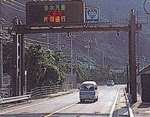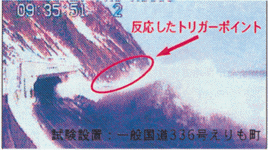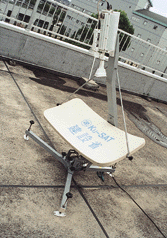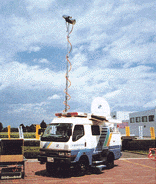
Real-time information is displayed on the road information panel.

A operations center full of road management systems, including a monitoring system. Collected information is provided from the center.
| Section 4 ITS toward Standard Deployment |
Measures against Natural Disasters |
 Real-time information is displayed on the road information panel. |
 A operations center full of road management systems, including a monitoring system. Collected information is provided from the center. |
 An automatically-transmitted still picture of a surf crossing the road |
During the heavy rain in August 1995, the Tohoku Regional Construction Bureau used KU-SAT in the disaster-stricken area to establish links with the disaster response headquarters and construction offices.The system served to facilitate site inspections and study of measures by the headquarters staff, dispatch emergency vehicles efficiently and reopen promptly the roads that had been closed by the disaster. Also available at the bureau are special 4WD disaster vehicles equipped with the KU-SAT system.
 KU-SAT can be used without a radio operator. |
 This small-sized and lightweight system can respond to an emergency quickly. |
 4-wheel drive disaster vehicles equipped with the KU-SAT system |

